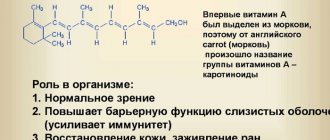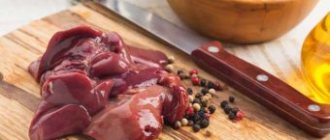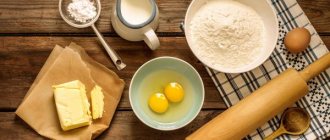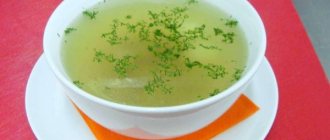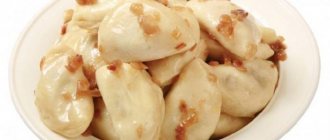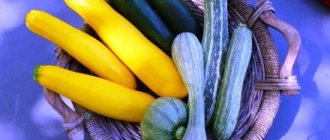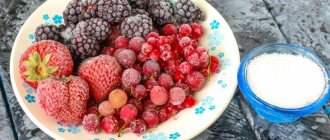Nov-29-2019 Author: KoshkaS
What are the benefits of chicken soup?
What calorie content does chicken soup with potatoes and noodles have, what beneficial properties does it have? All this is of great interest to those who lead a healthy lifestyle and monitor their health and figure. So we will try to answer these questions in the next article.
So here it is:
Poultry meat, unlike the meat of other farm animals, is rich in polyunsaturated fatty acids that are essential for humans - linoleic, linolenic and arachidonic, which account for 22% of the mass of all fats. Omega 3 and Omega 6 fatty acids have a broad and profound effect on various body systems: necessary for the normal functioning of brain cells; help remove cholesterol from the body; ensure stability of the heart and blood vessels; normalize blood pressure.
Chicken soup contains vitamins: A, group B, E, K (phylloquinone), nicotinic acid, as well as magnesium, sodium, calcium, iron, sulfur, phosphorus, selenium - a whole complex of substances necessary for the harmonious functioning of the body.
How many calories are in Chicken Noodle Soup?
Here's how much:
Soup recipe:
Components:
- Chicken fillet – 500 gr. — (550 kcal)
- Potatoes – 250 gr. — (200 kcal)
- Carrots – 100 gr. — (32 kcal)
- Onions – 60 gr. — (25 kcal)
- Vermicelli – 100 gr. — (366 kcal)
- Vegetable oil – 2 tbsp. spoons - (456 kcal)
- Water – 2 l. — (0 kcal)
- Ground black pepper – to taste – (0 kcal)
- Salt - to taste - (0 kcal)
First of all, cook the broth. For the broth we use chicken fillet, although we usually use other parts of the chicken, since they make the broth tastier and richer. But if you don’t like fatty broth, then breast is just right.
Wash the chicken fillet under running water, cut into pieces and place in a pan with cold water. Bring to a boil, then reduce the heat to low and cook for 20 minutes, skimming off the foam. At the end of cooking, add salt to taste.
Finely chop the onion and place it in a heated frying pan with vegetable oil.
Grate the carrots on a coarse grater and after 3 minutes add them to the onions in the frying pan. Fry for another 3 minutes and remove from heat. Cut the potatoes into small cubes. Remove the chicken from the broth and cut into small pieces. Add potatoes to the boiling broth and after 5 minutes add the fried chicken. Then add the vermicelli and continue to cook for as long as indicated on the vermicelli package.
Based on this recipe:
The calorie content of chicken soup with potato vermicelli, per 100 grams, is:
Recipe for chicken soup with noodles and potatoes. Calorie, chemical composition and nutritional value.
Nutritional value and chemical composition of “chicken soup with noodles and potatoes.”
The table shows the nutritional content (calories, proteins, fats, carbohydrates, vitamins and minerals) per 100 grams of edible portion.
| Nutrient | Quantity | Norm** | % of the norm in 100 g | % of the norm in 100 kcal | 100% normal |
| Calorie content | 50.2 kcal | 1684 kcal | 3% | 6% | 3355 g |
| Squirrels | 3.3 g | 76 g | 4.3% | 8.6% | 2303 g |
| Fats | 2.4 g | 56 g | 4.3% | 8.6% | 2333 g |
| Carbohydrates | 3.8 g | 219 g | 1.7% | 3.4% | 5763 g |
| Alimentary fiber | 0.4 g | 20 g | 2% | 4% | 5000 g |
| Water | 89.7 g | 2273 g | 3.9% | 7.8% | 2534 g |
| Ash | 0.4 g | ~ | |||
| Vitamins | |||||
| Vitamin A, RE | 24.7 mcg | 900 mcg | 2.7% | 5.4% | 3644 g |
| Retinol | 0.004 mg | ~ | |||
| alpha carotene | 83.229 mcg | ~ | |||
| beta carotene | 0.203 mg | 5 mg | 4.1% | 8.2% | 2463 g |
| Lycopene | 0.024 mcg | ~ | |||
| Lutein + Zeaxanthin | 6.128 mcg | ~ | |||
| Vitamin B1, thiamine | 0.033 mg | 1.5 mg | 2.2% | 4.4% | 4545 g |
| Vitamin B2, riboflavin | 0.032 mg | 1.8 mg | 1.8% | 3.6% | 5625 g |
| Vitamin B4, choline | 10.69 mg | 500 mg | 2.1% | 4.2% | 4677 g |
| Vitamin B5, pantothenic | 0.059 mg | 5 mg | 1.2% | 2.4% | 8475 g |
| Vitamin B6, pyridoxine | 0.135 mg | 2 mg | 6.8% | 13.5% | 1481 g |
| Vitamin B9, folates | 2.86 mcg | 400 mcg | 0.7% | 1.4% | 13986 g |
| Vitamin C, ascorbic acid | 3.66 mg | 90 mg | 4.1% | 8.2% | 2459 g |
| Vitamin E, alpha tocopherol, TE | 0.625 mg | 15 mg | 4.2% | 8.4% | 2400 g |
| Vitamin H, biotin | 0.054 mcg | 50 mcg | 0.1% | 0.2% | 92593 g |
| Vitamin K, phylloquinone | 0.3 mcg | 120 mcg | 0.3% | 0.6% | 40000 g |
| Vitamin RR, NE | 2.1118 mg | 20 mg | 10.6% | 21.1% | 947 g |
| Niacin | 1.256 mg | ~ | |||
| Betaine | 0.01 mg | ~ | |||
| Macronutrients | |||||
| Potassium, K | 132.86 mg | 2500 mg | 5.3% | 10.6% | 1882 |
| Calcium, Ca | 7.34 mg | 1000 mg | 0.7% | 1.4% | 13624 g |
| Silicon, Si | 0.052 mg | 30 mg | 0.2% | 0.4% | 57692 g |
| Magnesium, Mg | 7.73 mg | 400 mg | 1.9% | 3.8% | 5175 g |
| Sodium, Na | 15.58 mg | 1300 mg | 1.2% | 2.4% | 8344 g |
| Sera, S | 31.43 mg | 1000 mg | 3.1% | 6.2% | 3182 g |
| Phosphorus, P | 37 mg | 800 mg | 4.6% | 9.2% | 2162 g |
| Chlorine, Cl | 20.66 mg | 2300 mg | 0.9% | 1.8% | 11133 g |
| Microelements | |||||
| Aluminium, Al | 140.8 mcg | ~ | |||
| Bor, B | 20.7 mcg | ~ | |||
| Vanadium, V | 23.5 mcg | ~ | |||
| Iron, Fe | 0.392 mg | 18 mg | 2.2% | 4.4% | 4592 g |
| Yod, I | 1.64 mcg | 150 mcg | 1.1% | 2.2% | 9146 g |
| Cobalt, Co | 2.462 mcg | 10 mcg | 24.6% | 49% | 406 g |
| Lithium, Li | 12.143 mcg | ~ | |||
| Manganese, Mn | 0.0433 mg | 2 mg | 2.2% | 4.4% | 4619 g |
| Copper, Cu | 50.45 mcg | 1000 mcg | 5% | 10% | 1982 |
| Molybdenum, Mo | 1.425 mcg | 70 mcg | 2% | 4% | 4912 g |
| Nickel, Ni | 0.827 mcg | ~ | |||
| Rubidium, Rb | 85 mcg | ~ | |||
| Selenium, Se | 0.05 mcg | 55 mcg | 0.1% | 0.2% | 110000 g |
| Fluorine, F | 68.83 mcg | 4000 mcg | 1.7% | 3.4% | 5811 g |
| Chromium, Cr | 2.82 mcg | 50 mcg | 5.6% | 11.2% | 1773 |
| Zinc, Zn | 0.3618 mg | 12 mg | 3% | 6% | 3317 g |
| Digestible carbohydrates | |||||
| Starch and dextrins | 3.278 g | ~ | |||
| Mono- and disaccharides (sugars) | 0.4 g | max 100 g | |||
| Galactose | 0.001 g | ~ | |||
| Glucose (dextrose) | 0.127 g | ~ | |||
| Maltose | 0.022 g | ~ | |||
| Sucrose | 0.266 g | ~ | |||
| Fructose | 0.045 g | ~ | |||
| Essential amino acids | 0.117 g | ~ | |||
| Arginine* | 0.205 g | ~ | |||
| Valin | 0.16 g | ~ | |||
| Histidine* | 0.059 g | ~ | |||
| Isoleucine | 0.131 g | ~ | |||
| Leucine | 0.275 g | ~ | |||
| Lysine | 0.253 g | ~ | |||
| Methionine | 0.082 g | ~ | |||
| Methionine + Cysteine | 0.116 g | ~ | |||
| Threonine | 0.15 g | ~ | |||
| Tryptophan | 0.05 g | ~ | |||
| Phenylalanine | 0.143 g | ~ | |||
| Phenylalanine+Tyrosine | 0.259 g | ~ | |||
| Nonessential amino acids | 0.193 g | ~ | |||
| Alanin | 0.178 g | ~ | |||
| Aspartic acid | 0.295 g | ~ | |||
| Hydroxyproline | 0.023 g | ~ | |||
| Glycine | 0.232 g | ~ | |||
| Glutamic acid | 0.567 g | ~ | |||
| Proline | 0.155 g | ~ | |||
| Serin | 0.154 g | ~ | |||
| Tyrosine | 0.118 g | ~ | |||
| Cysteine | 0.036 g | ~ | |||
| Sterols (sterols) | |||||
| Cholesterol | 5.29 mg | max 300 mg | |||
| beta sitosterol | 2.478 mg | ~ | |||
| Saturated fatty acids | |||||
| Saturated fatty acids | 0.4 g | max 18.7 g | |||
| 14:0 Miristinovaya | 0.008 g | ~ | |||
| 15:0 Pentadecane | 0.001 g | ~ | |||
| 16:0 Palmitinaya | 0.278 g | ~ | |||
| 17:0 Margarine | 0.005 g | ~ | |||
| 18:0 Stearic | 0.125 g | ~ | |||
| 20:0 Arakhinovaya | 0.005 g | ~ | |||
| 22:0 Begenovaya | 0.009 g | ~ | |||
| Monounsaturated fatty acids | 0.85 g | min 16.8 g | 5.1% | 10.2% | |
| 14:1 Myristoleic | 0.001 g | ~ | |||
| 16:1 Palmitoleic | 0.07 g | ~ | |||
| 17:1 Heptadecene | 0.008 g | ~ | |||
| 18:1 Oleic (omega-9) | 0.759 g | ~ | |||
| 20:1 Gadoleic (omega-9) | 0.011 g | ~ | |||
| Polyunsaturated fatty acids | 0.979 g | from 11.2 to 20.6 g | 8.7% | 17.3% | |
| 18:2 Linolevaya | 0.956 g | ~ | |||
| 18:3 Linolenic | 0.022 g | ~ | |||
| 20:4 Arachidonic | 0.012 g | ~ | |||
| Omega-6 fatty acids | 0.2 g | from 4.7 to 16.8 g | 4.3% | 8.6% |
The energy value of chicken soup with noodles and potatoes is 50.2 kcal.
Primary Source: Created in the application by the user. Read more.
** This table shows the average levels of vitamins and minerals for an adult. If you want to know the norms taking into account your gender, age and other factors, then use the “My Healthy Diet” application.
Recipe: Vermicelli noodles with chicken. Calorie, chemical composition and nutritional value.
Nutritional value and chemical composition of “Vermicelli noodles with chicken.”
The table shows the nutritional content (calories, proteins, fats, carbohydrates, vitamins and minerals) per 100 grams of edible portion.
| Nutrient | Quantity | Norm** | % of the norm in 100 g | % of the norm in 100 kcal | 100% normal |
| Calorie content | 106.1 kcal | 1684 kcal | 6.3% | 5.9% | 1587 g |
| Squirrels | 6.7 g | 76 g | 8.8% | 8.3% | 1134 g |
| Fats | 3.5 g | 56 g | 6.3% | 5.9% | 1600 g |
| Water | 89 g | 2273 g | 3.9% | 3.7% | 2554 g |
| Ash | 0.768 g | ~ | |||
| Vitamins | |||||
| Vitamin A, RE | 12.7 mcg | 900 mcg | 1.4% | 1.3% | 7087 g |
| Retinol | 0.013 mg | ~ | |||
| beta carotene | 0.003 mg | 5 mg | 0.1% | 0.1% | 166667 g |
| Vitamin B1, thiamine | 0.032 mg | 1.5 mg | 2.1% | 2% | 4688 g |
| Vitamin B2, riboflavin | 0.063 mg | 1.8 mg | 3.5% | 3.3% | 2857 g |
| Vitamin RR, NE | 1.362 mg | 20 mg | 6.8% | 6.4% | 1468 g |
| Niacin | 1.362 mg | ~ | |||
| Macronutrients | |||||
| Potassium, K | 82.39 mg | 2500 mg | 3.3% | 3.1% | 3034 g |
| Calcium, Ca | 9.18 mg | 1000 mg | 0.9% | 0.8% | 10893 g |
| Magnesium, Mg | 6.98 mg | 400 mg | 1.7% | 1.6% | 5731 g |
| Sodium, Na | 202.57 mg | 1300 mg | 15.6% | 14.7% | 642 g |
| Sera, S | 68.82 mg | 1000 mg | 6.9% | 6.5% | 1453 g |
| Phosphorus, P | 44.7 mg | 800 mg | 5.6% | 5.3% | 1790 g |
| Chlorine, Cl | 295.24 mg | 2300 mg | 12.8% | 12.1% | 779 g |
| Microelements | |||||
| Iron, Fe | 0.647 mg | 18 mg | 3.6% | 3.4% | 2782 g |
| Yod, I | 1.9 mcg | 150 mcg | 1.3% | 1.2% | 7895 g |
| Cobalt, Co | 3.235 mcg | 10 mcg | 32.4% | 30.5% | 309 g |
| Manganese, Mn | 0.0115 mg | 2 mg | 0.6% | 0.6% | 17391 g |
| Copper, Cu | 30.06 mcg | 1000 mcg | 3% | 2.8% | 3327 g |
| Molybdenum, Mo | 6.434 mcg | 70 mcg | 9.2% | 8.7% | 1088 g |
| Fluorine, F | 95.48 mcg | 4000 mcg | 2.4% | 2.3% | 4189 g |
| Chromium, Cr | 8.87 mcg | 50 mcg | 17.7% | 16.7% | 564 g |
| Zinc, Zn | 0.5412 mg | 12 mg | 4.5% | 4.2% | 2217 g |
| Essential amino acids | |||||
| Arginine* | 580.271 g | ~ | |||
| Valin | 0.329 g | ~ | |||
| Histidine* | 0.228 g | ~ | |||
| Isoleucine | 0.31 g | ~ | |||
| Leucine | 0.561 g | ~ | |||
| Lysine | 0.729 g | ~ | |||
| Methionine | 0.127 g | ~ | |||
| Methionine + Cysteine | 0.244 g | ~ | |||
| Threonine | 0.304 g | ~ | |||
| Tryptophan | 0.108 g | ~ | |||
| Phenylalanine | 0.291 g | ~ | |||
| Phenylalanine+Tyrosine | 0.519 g | ~ | |||
| Nonessential amino acids | |||||
| Alanin | 0.399 g | ~ | |||
| Aspartic acid | 573.303 g | ~ | |||
| Hydroxyproline | 0.06 g | ~ | |||
| Glycine | 0.405 g | ~ | |||
| Glutamic acid | 0.931 g | ~ | |||
| Proline | 0.358 g | ~ | |||
| Serin | 0.298 g | ~ | |||
| Tyrosine | 0.228 g | ~ | |||
| Cysteine | 0.114 g | ~ | |||
| Sterols (sterols) | |||||
| Cholesterol | 9.5 mg | max 300 mg | |||
| Saturated fatty acids | |||||
| Saturated fatty acids | 1 g | max 18.7 g | |||
| 14:0 Miristinovaya | 0.025 g | ~ | |||
| 15:0 Pentadecane | 0.006 g | ~ | |||
| 16:0 Palmitinaya | 0.754 g | ~ | |||
| 17:0 Margarine | 0.022 g | ~ | |||
| 18:0 Stearic | 0.193 g | ~ | |||
| 20:0 Arakhinovaya | 0.025 g | ~ | |||
| Monounsaturated fatty acids | 1.834 g | min 16.8 g | 10.9% | 10.3% | |
| 14:1 Myristoleic | 0.01 g | ~ | |||
| 16:1 Palmitoleic | 0.298 g | ~ | |||
| 17:1 Heptadecene | 0.025 g | ~ | |||
| 18:1 Oleic (omega-9) | 1.267 g | ~ | |||
| Polyunsaturated fatty acids | 0.516 g | from 11.2 to 20.6 g | 4.6% | 4.3% | |
| 18:2 Linolevaya | 0.032 g | ~ | |||
| 18:3 Linolenic | 0.485 g | ~ | |||
| Omega-3 fatty acids | 0.5 g | from 0.9 to 3.7 g | 55.6% | 52.4% |
The energy value of Vermicelli noodles with chicken is 106.1 kcal.
Primary Source: Created in the application by the user. Read more.
** This table shows the average levels of vitamins and minerals for an adult. If you want to know the norms taking into account your gender, age and other factors, then use the “My Healthy Diet” application.
Chicken soup with noodles and potatoes - calories per 100 grams
There is no exact caloric value for chicken soup, since it depends on what part of the chicken is being cooked from. You can only name the average figure per 100 grams of product - from 40 to 100 kcal.
Step 3. Fry finely chopped onion in vegetable oil until translucent.
Step 4. Three carrots on a grater. I love when you can feel the carrots in the soup, sometimes I chop them finely with a knife, but this time I grated them using a Korean carrot grater.
Step 5. Add the carrots to the onions and fry them until orange. The color of the entire soup will depend on its quantity. It will be a beautiful golden color. It was possible to cook the soup without frying, it turns out to be less caloric, but the color is not at all attractive.
Step 6. Chicken broth needs 35-45 minutes to cook after boiling. After this, add chopped potatoes and salt to taste. Add salt gradually and it is better to add salt during the cooking process.
We wait again until the broth boils and after that we wait another 3 minutes and discard the vermicelli and our frying. Don’t overdo it with vermicelli, literally 2-3 tbsp. l. Enough for a medium saucepan.
There is very little left until the finale, wait until the potatoes and noodles are cooked, and you can turn off the heating. This will take about another 3-4 minutes.
As each ingredient is added, the temperature decreases and the boiling stops. So you need to constantly make sure that it is not strong. As soon as you add a new ingredient, you need to increase the heat, and when it boils, turn it down. Therefore, you cannot go far from the stove.
Let's try the salt again while there is still time to adjust it and 2 minutes before turning off, throw in a few bay leaves and finely chopped herbs.
Step 7. Cover with a lid and let stand for a few minutes. As you noticed, most of the time was spent on preparing the chicken broth and one hour is enough to prepare the entire soup. And by the standards of first courses, this is quite fast.
We pour it into plates and invite everyone to the table.
As I said, the soup turned out to be a beautiful golden color. And the photo below confirms this...
If you also like this chicken noodle soup, then rate it and share the recipe with your friends.
How to cook chicken soup with noodles and potatoes
This soup is very easy to prepare and now I will show you each step with step-by-step photos. A very important step is to cook the broth correctly. If you can’t buy a whole chicken, you can use thighs, wings, or whole legs. And don’t even think about cooking chicken breast broth, as you won’t get a rich broth!
Ingredients
- Chicken (chicken legs) - 2 pcs.
- Vermicelli - 2 tbsp. l
- Potatoes - 2 pcs.
- Carrots - 1 pc.
- Onion - 1 pc.
- Vegetable oil - for frying
- Greens - 1 bunch
- Salt - to taste
Boil the broth, fry the onions and carrots, transfer them to the prepared broth along with potatoes and noodles. That's it, here are the basic steps for making chicken noodle soup. And if you don’t know what to feed your children, then cook according to this recipe. They may not like borscht or rassolniki, but they eat this soup with pleasure. Instead of noodles, you can use other noodles or stars. Nowadays the store sells pasta in the shape of the alphabet, and children really like it. Yes, I myself remember from my childhood how my grandmother fed me a similar soup. I loved it very much and ate it with pleasure. And you?
Step 1. Fill the chicken with cold water and put it on the fire. As it boils, foam will appear, collect it carefully. And after the water boils, reduce the heat so that the broth barely simmers.
Step 2. For now, peel the carrots and one medium onion.
